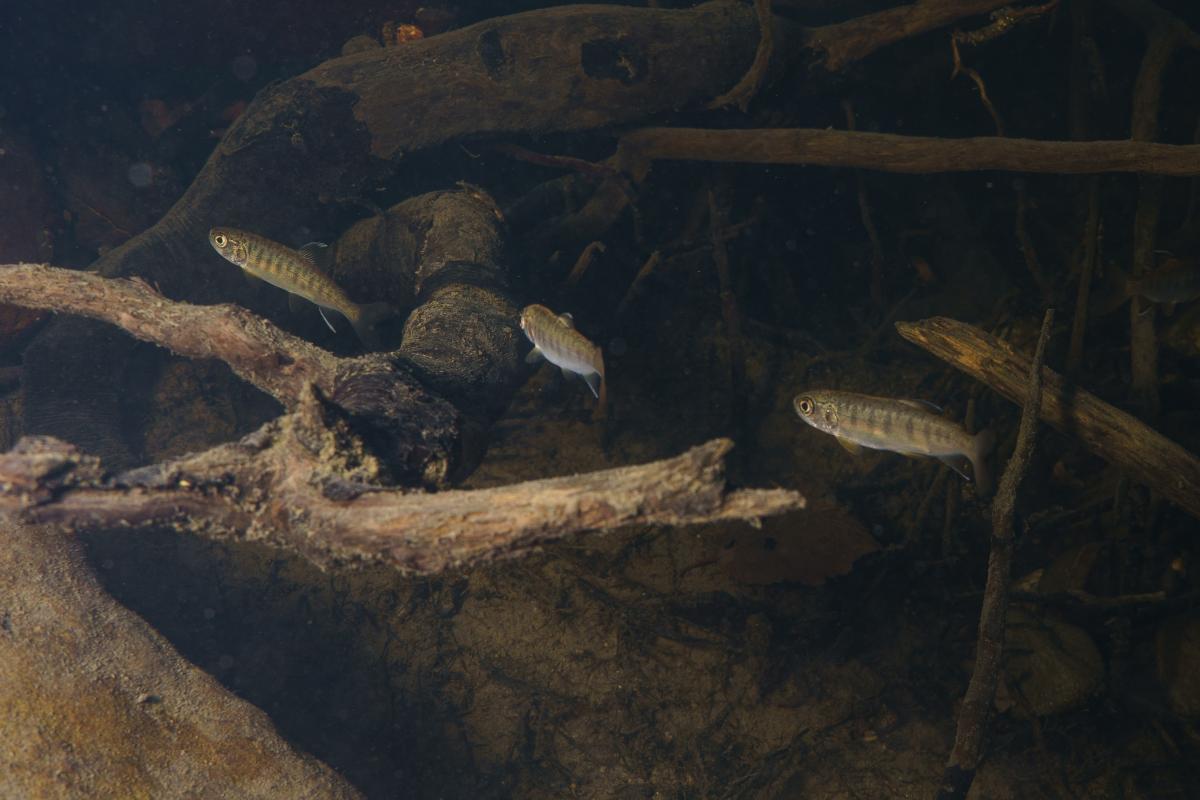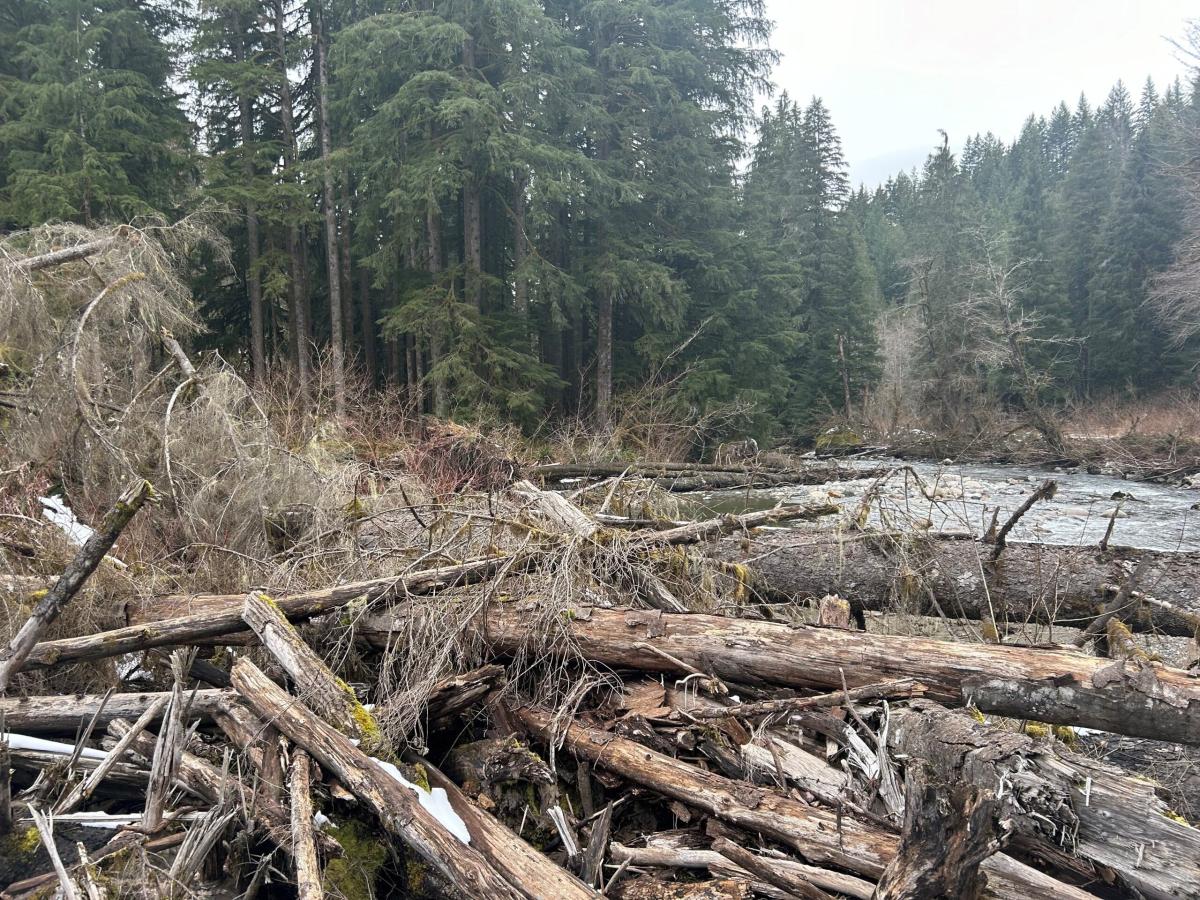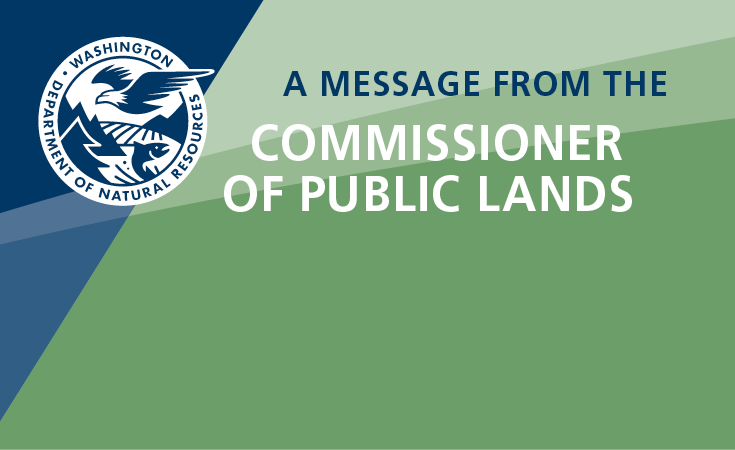Large Wood Supply Initiative - Snohomish Pilot (LWSI)
Timber and salmon have been foundations of Washington’s economic and cultural identity for generations. Department of Natural Resource’s (DNR’s) Large Wood Supply Initiative (LWSI) works to get trees from DNR-managed lands into the hands of salmon recovery partners, so they can be used for habitat restoration projects throughout the Snohomish Basin. This unique pilot initiative is building a sustainable nexus between salmon recovery and timber harvest, while advancing critical recovery goals in the watershed.
DNR’s Snohomish Watershed Resilience Action Plan (WRAP) works to coordinate, enhance, and maximize investments to protect and restore salmon habitat at the watershed scale.
One of the goals of WRAP is for DNR identify how we can support salmon recovery in new ways. The Large Wood Supply Initiative exemplifies this approach. This innovative new initiative will help address supply chain challenges that make it difficult for salmon recovery partners to find wood for river and stream restoration projects. DNR is piloting the LWSI in the Snohomish Watershed to develop a proof of concept and a model for expansion throughout the Watershed Resilience Program.

Juvenile coho salmon utilizing in-stream wood for refuge. Photo: Matt Steinwurtzel, DNR
More wood in rivers? But why?
-
Woody debris is an important feature of healthy, climate-resilient rivers and streams, providing a multitude of habitat benefits critical for salmon recovery.
-
Large wood helps retain gravel suitable for our salmon returning home from the ocean to spawn.
-
Large wood promotes the creation of instream structure such as pools, which reduce thermal limits while providing cover and enhanced rearing opportunities for juveniles.
Large wood should be deposited from adjacent forested uplands into rivers and streams from natural events such as landslides, windstorms, and erosion. However, there is often a lack of large trees along the banks of Washington’s waterways due to widespread logging, land use and development. This limits the natural recruitment of large wood into streams and rivers. Because of this, many salmon restoration projects include large wood structural elements like engineered log jams, that seek to replicate the natural structures missing from our rivers and streams.
Securing reliable access to the materials needed for instream wood projects can be a significant challenge for partners in salmon recovery. DNR is uniquely positioned to address this challenge, as the agency that oversees more than 2 million acres of forest lands across the state.
The Large Wood Supply Initiative team is working to identify a sustainable framework for getting wood into the supply chain for salmon habitat projects. Once this program is successfully implemented in the Snohomish Watershed, DNR will look to expand the LWSI so that this initiative can help partners engaged in salmon recovery throughout the state.

A large naturally forming log jam on the Pilchuck River. Photo: DNR
Interested in learning more about the LWSI? Contact Matt Steinwurtzel, DNR’s Watershed Restoration Support Specialist overseeing the initiative.
Additional resources on the importance of wood in rivers, streams and restoration:


